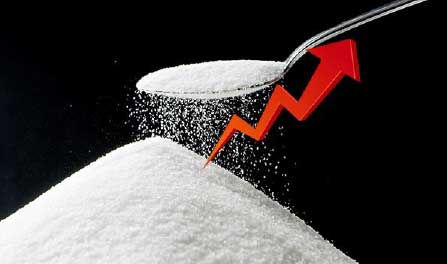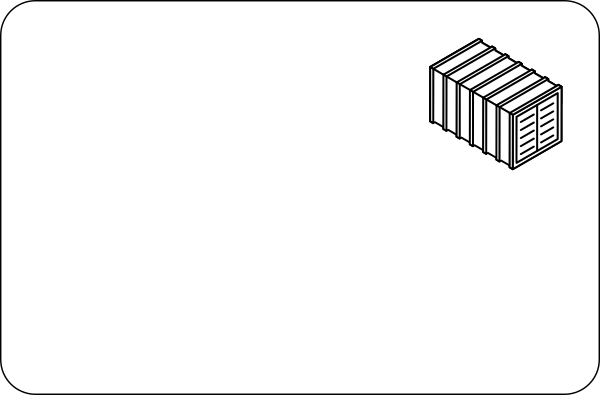Commodities are any raw or primary agricultural products that can be bought and sold. Although there are slight differences between producers in the market, these products are interchangeable with each other.
Examples of commodities include wheat and coffee.
For something to be a commodity, it must satisfy three conditions:
- It must be standardized
- It must have a shelf life (i.e. it must eventually expire)
- Its price must vary enough to justify creating a market for the item.
Have you ever heard about commodities and their role in the food manufacturing industry? If you haven’t, that isn’t surprising. Many people think of buying food directly from their local farmers, and that is true. Commodities, however, take this to a new level. Although each of us has a personal connection to food, we sometimes forget that food is a business and there are many jobs that make up the business side.
The people who deal with purchasing raw materials on a very large scale are Commodity Procurement/Merchandisers. They work behind the scenes acquiring ingredients for companies.
Commodity merchandisers buy and sell commodities

Commodity merchandisers buy and sell agricultural products in the form of commodities. They work as a middleman, buying commodities from farmers and then selling it to other companies. They can also work in a food company, purchasing products from farmers and processors directly.
A key aspect of this job is developing and implementing buying strategies that provide optimal price, quality, reliability, availability and inventory for raw materials. When purchasing commodities, they want the overall lowest price possible for the highest quality product. There are many strategies that a Commodity merchandiser can use, but usually, these strategies revolve around fostering and managing relationships with suppliers.
Merchandisers build and maintain relationships with suppliers and customers by keeping customers aware of the current market news. They investigate major vendor issues, such as bankruptcies, quality failures, delivery failures and relationship failures, and establish satisfactory resolutions.
Merchandisers play an important role in the food supply chain because they must follow the flow of a product throughout the year. Processors such as food manufacturing plants typically do not have the capabilities to store the amount of raw materials they consistently need. Therefore, they task merchandisers to buy agricultural products at harvest, find a place to store them and distribute it to users over the year. Finally, merchandisers coordinate shipping schedules to move agricultural products. They coordinate by providing administrative support, such as contacting suppliers and transportation companies.
Commodity merchandisers analyze markets
Supply and demand are the two things that determine the prices of commodities. Low supplies drive up demand, leading to higher prices. The opposite effect occurs with high supply amounts. Although this sounds simple on the surface, calculating the price of commodities ahead of time is a difficult business. Factors like droughts and technological changes affect supplies.
Agriculture Commodity merchandisers spend their time determining when price differences will occur by forecasting trends. Merchandisers use specialized methods of predicting prices, including analyzing past price patterns and commodity stock levels. All of this is done to figure out the best time to buy at a cheaper price!
Commodity merchandisers have postsecondary careers in agriculture and business
Commodity merchandisers generally have a postsecondary degree in agriculture, commerce or business administration. Business degrees prepare students to deal with the constantly changing economy and make decisions concerning the risk and uncertainty of agricultural production. In contrast, agricultural degrees help students understand the actual commodity and the physical factors (e.g. growing conditions) that affect the growth of commodities.
Becoming a Commodity merchandiser without a degree is a rare possibility, but experience in this field is essential. Typically, these individuals begin their careers in entry-level roles like sales and work their way through the system.
Commodity merchandisers develop relationships
The ability to build and maintain strong relationships is a key aspect of any merchandiser’s job. Selling and buying commodities are dependent on good relationships because merchandisers negotiate contracts with clients. Building relationships takes time, and sometimes these relationships span for decades!
Merchandisers are always on the lookout for new business openings. They spend a lot of time visiting the farmers that supply them, meeting with clients, and overseeing logistics arrangements for them. Relationships are dependent on constant communication.
Commodity merchandisers understand the company they work for
How a Commodity merchandiser conducts business is dependent on the company that they work for. It is very important for a merchandiser to understand company values and needs. They don’t want to purchase the wrong type of grain or have a delivery method that doesn’t suit the company.
Merchandisers undergo internal meetings at work to ensure their daily duties align with product lines, production, business team and functions.
Commodity merchandisers understand economics

Having a sound knowledge of basic economic principles is a vital aspect of becoming an expert commodity merchandiser. Throughout the year, the prices of commodities change, causing challenges in the merchandiser’s job. Costs change depending on the market’s demand and world weather conditions.
Merchandisers learn basic economics in college or university and apply it to their jobs. They might use hedging as an alternative way to lock in prices during periods of high demand.
Commodity merchandisers learn over time how to manage the pipeline of commodities from producer to end-user, including supply chain logistics, contract execution, and quality control. Overall, they understand the economics of each step, and it affects the price of a commodity.
Commodity merchandisers perform risk management
Agricultural commodities always pose a level of risk because they are tangible objects. Environmental events like floods or political events affect the price of agricultural products.
To combat these uncertainties, Commodity merchandisers perform risk management – a practice that identifies potential risks in advance so that they can take precautionary steps to reduce the risk. As a buyer, here are some examples of how they mitigate risk:
- Supplier negotiation: Approaching a supplier for an alternative pricing plan. This includes lowering the price of larger volumes of commodities and alternatives to the commodity.
- Alternative product sourcing: More than one farmer sells the same product. Therefore, procurement merchandisers find new suppliers.
- Production process review: Sometimes Commodity merchandisers get involved in the production of agricultural items. They look to growers to develop new processes for cheaper food production. They work with the growers by continually reviewing product processes.
Commodity merchandisers negotiate, analyze and perform mathematics
Being a Food commodity merchandiser requires a range of skills. However, there are a few which are more essential than others. These skills include:
- Negotiation skills – Food Commodity merchandisers use negotiation skills daily. Example situations include negotiating a lower price on a commodity and a shorter delivery time on a shipment. How they negotiate is dependent on the merchandiser, but it always includes a lot of talking over the phone and in person!
- Analytical and interpreting skills – There are many tasks that require a commodity trader to be analytical. One of the prime examples is gathering data and determining what information is important for buying and selling commodities. On the surface, this sounds easy, but predicting market trends is dependent on picking out the right information
- Math Skills – The agricultural commodities market is all about mathematics, especially probability. Commodities are agricultural items that can spoil, which poses a certain level of risk (e.g. a drought). Commodity merchandisers use mathematics to determine probabilities and how much risk that is likely to occur.



